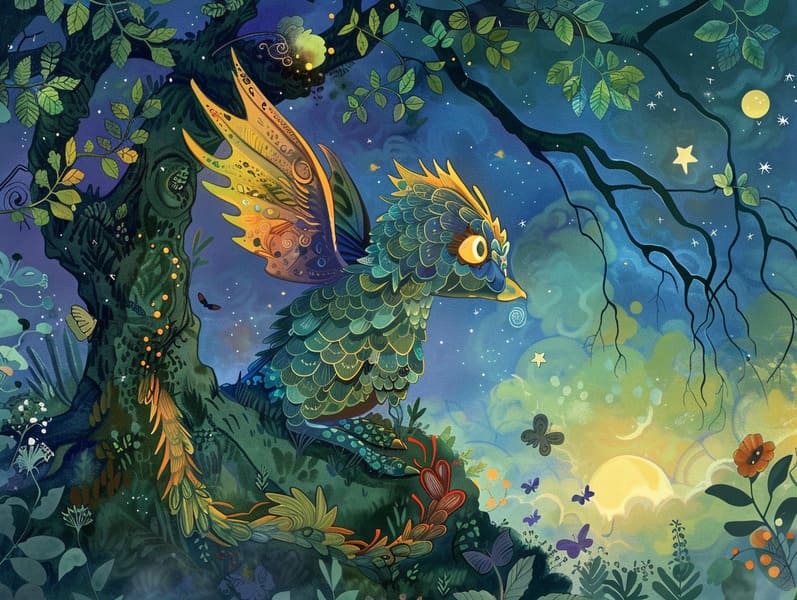Tracing the Heritage of Online Fairy Tales with the Eternal Grace.
Tracing the Heritage of Online Fairy Tales with the Eternal Grace.
Blog Article

Famous fairy tales have old origins. These narratives have been whispered from one generation to the next well before they were ever published. They developed from a variety of societies, including Eastern traditions. They were initially narrated among older generations, often carrying themes and messages relevant to the societal norms and beliefs of the time.
The Brothers Grimm, Jacob and Wilhelm Grimm, were among the first to compile and publish many of these beloved narratives. Their published works, "Grimm's Fairy Tales," included classics like "The Little Glass Slipper," "Hansel and Grethel," and "Little Snow White," which have since become hallmarks in the world of beloved fairy tales. Similarly, H. C. Andersen's fanciful tales, such as "The Sea Maid," and "The Duckling that Could," have stolen hearts worldwide, guaranteeing their place in the pantheon of beloved fairy tales.
Despite their ancient origins, traditional fairy tales remain as significant as ever, especially as children's bedtime stories. These fantastical tales are now available in multiple formats, including vibrantly illustrated books, enchanting animations, and internet fairy tales.
Their lasting presence can be credited to several fascinating points:
Valuable Lessons: Traditional fairy tales often whisper important moral lessons. Stories like "The Boy Who Cried Wolf" teach the benefit of being truthful, while "The Story of the Tortoise and the Hare" point out the virtues of resolve and meekness. These tales offer young ones clear distinctions between truth and falsehood, developing their moral compass in a soft yet meaningful way.
Kindness and Comprehension: Traditional fairy tales frequently involve figures facing tests and troubles, prompting readers to comprehend with their struggles and celebrate their triumphs. For instance, "Beauty and Her Beast" illustrates the necessity of appreciating inner worth to comprehend the inner being of a individual, advancing perception and discernment.
Cultural Comprehension: Many ancient fairy tales are deeply embedded in the cultural contexts from which they emerged. Exploring these stories can provide enlightening views into different social structures, enhancing a sense of world understanding and understanding.
Creativity and Fantasy: The whimsical elements in traditional fairy tales—wizardry and magic—spark children’s inventiveness. These tales take readers to fantastical realms, encouraging inventive ideas and a sense of magic that continues a lifetime.
Timeless fairy tales are not only entrancing but also pedagogical. They function as magical tools in developing various cognitive and affective skills in kids. When ancient fairy tales are told out loud, they improve language proficiency by bringing new language items and detailed sentence structures. This practice also improves hearing abilities and focus, as little ones track the narrative, eager to see what happens next.
Furthermore, deliberating the themes and characters of classic fairy tales can sharpen thinking skills and evaluative skills. Young readers are instructed to identify patterns, foresee events, and get cause and effect. These analyses also promote kids communicate their thoughts and feelings, strengthening their emotional intelligence.
In today’s information age, the availability of digital fairy tales has made these tales more acquirable than ever. Online resources and applications feature broad selections of Grimm's fairy tales that can be browsed or listened to anytime, anywhere. Fairy tales recited are particularly widespread, making available an enjoyable way for the young to experience these fantastical tales. Sound books and spoken videos carry characters and settings to life, often paired with charming musical scores and harmonies that raise the narrative adventure.
The unfading fascination of traditional fairy tales lies in their ability to alter to present days while keeping hold of their core messages. Contemporary versions of these fairy tales often incorporate more multicultural protagonists and modern settings, making them relatable to today’s audience. However, the main ideas of valor, sympathy, and fair play remain unchanged, continuing to influence audiences of all ages.
Traditional fairy tales also offer a sense of security and familiarity. They confer a organized narrative with a apparent beginning, middle, and end, often coming to a close with the culmination of conflicts and the triumph of morality over wickedness. This reliability can be calming for young ones, imparting a sense of consistency in an ever-changing world.
Classic fairy tales continue to fascinate and instruct new generations, maintaining their appeal and importance in modern society. As children's bedtime stories, they afford a perfect blend of enchantment and education, enhancing moral values, empathy, and creativity. The existence of web-based fairy tales and the well-liked nature of fairy tales read out loud make sure that these old tales remain accessible to new generations.
By retaining and telling these tales, we continue to esteem the rich tapestry of fables and cultural heritage. Whether you are enjoying a colorful picture book, accessing a web collection, or playing an narrated book, the fascination of bedtime fairy tales is always within reach. These narratives highlight of the timeless influence of narratives and its ability to unite this site us across eras and regions.
If you are discovering a gorgeously illustrated book, experiencing a online library, or listening on an read-aloud story, the captivation of ancient fairy tales is always within reach.
These tales remind us of the undying magic of narratives and its ability to unite us across generations and cultures, making a tie that fascinates and enlightens alike.